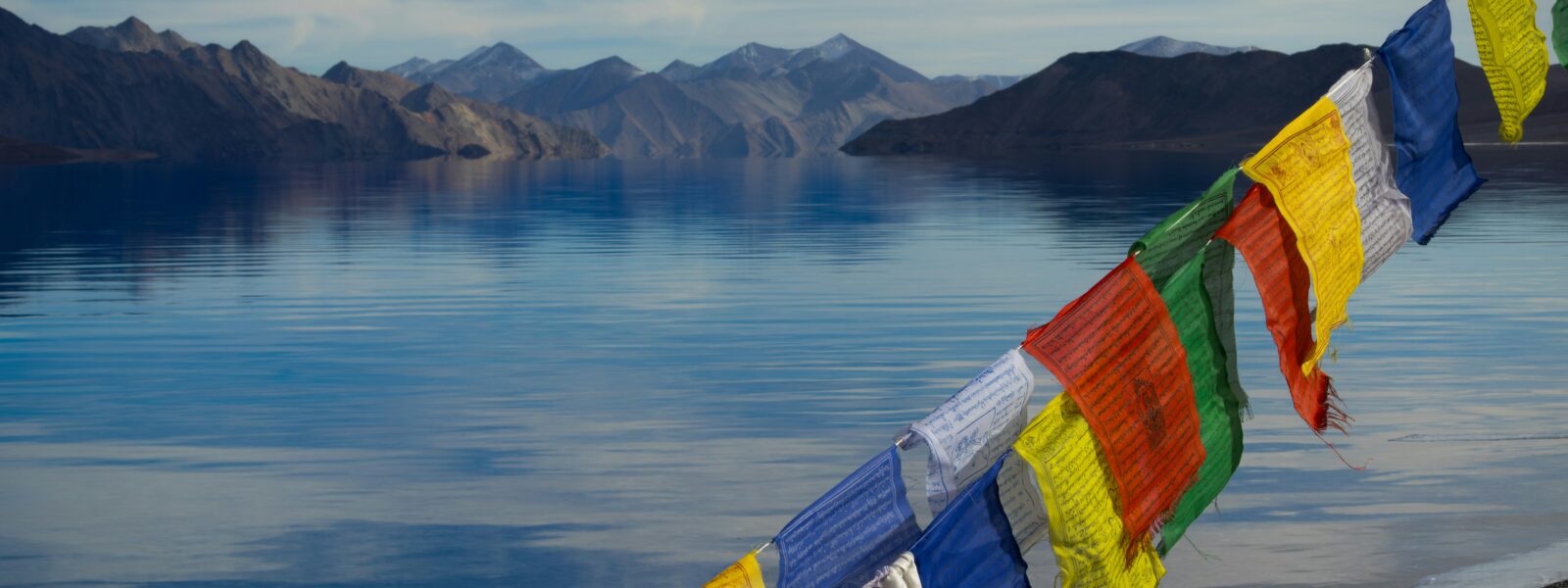When a Landscape Teaches You Its Own Calendar
By Declan P. O’Connor
Introduction — Why “Best Time to Visit Ladakh” Is Not a Simple Date Range
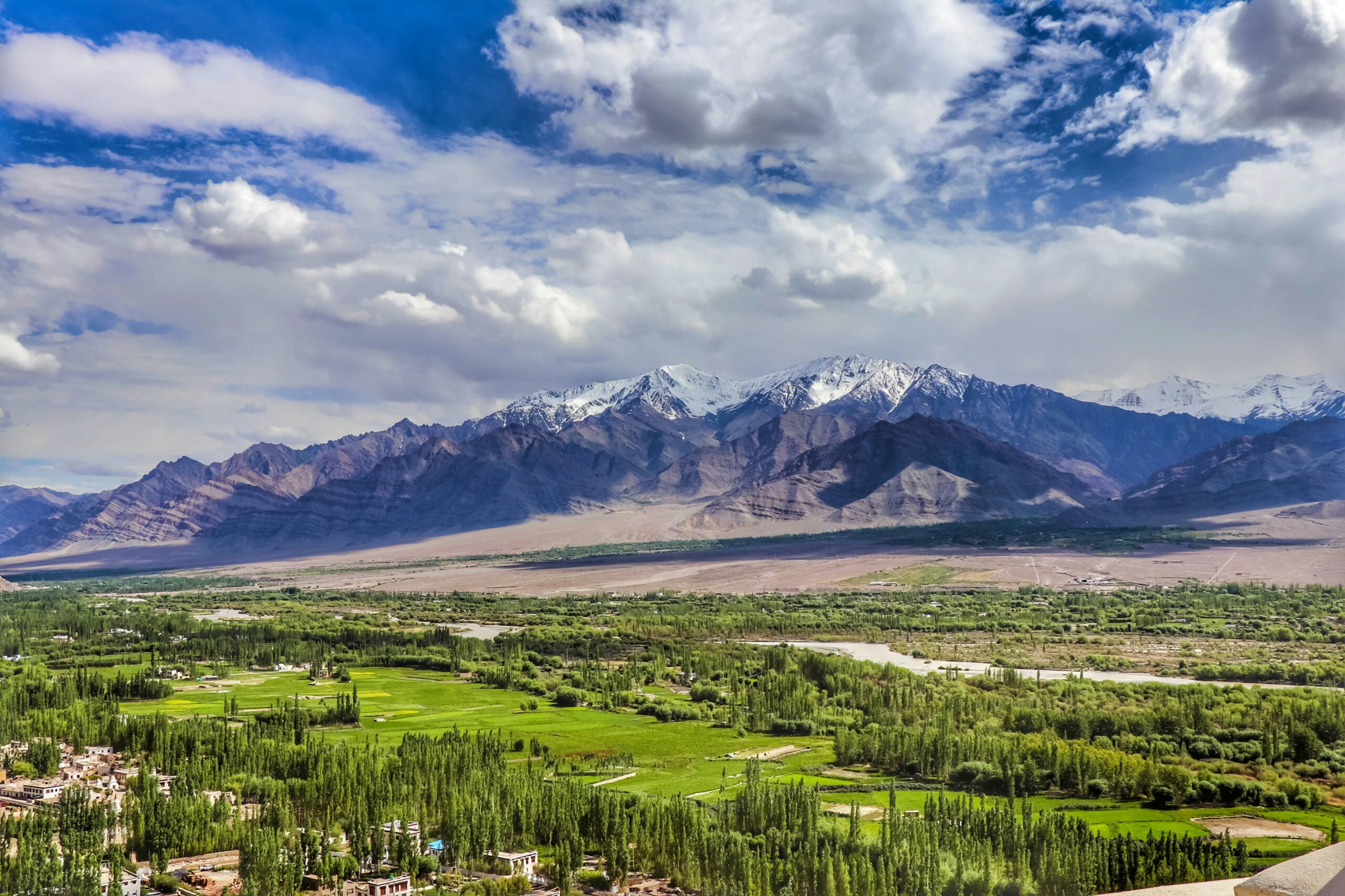
A Landscape That Teaches You Its Own Calendar
For most European travelers, the first question is predictable: “What is the best time to visit Ladakh?” It sounds like a purely practical query, the sort of thing a search engine should answer with a neat bullet list and a couple of temperature charts. Yet the more time you spend in Ladakh, the more that question begins to feel slightly wrong, as if it were asked in the wrong language. The region does not behave like a typical destination: it resists being squeezed into a simple high-season or low-season diagram because altitude does not just change the climate; it changes you. The thin air, long horizons, and bright, spare light turn each month into a different kind of inner conversation. If you insist on a short answer, you can say that the best time to visit Ladakh is usually between June and October, when the roads are open and the weather is broadly stable. But a traveler who only hears that answer misses the deeper truth. June sunlight feels different from October’s sharp clarity. Winter silence carries a weight that July’s buzzing trails never will. To ask about the best time to visit Ladakh, then, is really to ask: What kind of traveler do I want to be, and what kind of landscape do I want it to reveal? That is the question this guide will try to answer, with equal attention to road conditions and to the quieter seasons of the soul.
Why European Travelers Keep Asking About the Best Time to Visit Ladakh
For European travelers, the logistics are not trivial. Taking a week or two off work, committing to a long-haul flight to India, and adding another domestic leg to reach Leh means that the best time to visit Ladakh is never a casual consideration. You worry about whether the high passes will be open, whether the treks will be safe, whether the monsoon will interfere with internal flights. You check school holidays, try to match your annual leave to a window of decent weather, and perhaps feel a little guilty about the carbon footprint of your journey. In that context, the phrase “best time to visit Ladakh” becomes a kind of moral and logistical filter: you want the journey to be worth it, to feel both responsible and deeply meaningful. This guide takes those concerns seriously but refuses to stop at the surface level. Yes, we will talk about open roads, reliable temperatures, and which months are realistic for first-time visitors. But we will also linger over the emotional weather of each season: the green optimism of July, the golden nostalgia of October, the austere peace of February. The best time to visit Ladakh is not a single date circled on a calendar; it is a moving intersection between your inner life and the plateau’s own slow, unwavering rhythm. The task is not simply to pick a month but to choose a mood—and allow that choice to change you.
Four Ways to Read Ladakh’s Seasons as a Traveler
Altitude, Light, and the Four Emotional Seasons
Before we begin talking about months and itineraries, it helps to understand how altitude reshapes the idea of a year. In most temperate European climates, winter, spring, summer, and autumn are defined by familiar patterns of temperature, rain, and daylight. In Ladakh, the altitude and geography sharpen those patterns into something more dramatic. Summer is not just warm and pleasant; it is the brief season when the high passes open, the villages are fully alive, and the network of roads turns the region into one connected world. Autumn is more than cooling weather; it is an almost spiritual clearing of the air, with long shadows and a kind of distilled calm that makes even a short walk feel contemplative. Winter, on the other hand, strips the landscape back to essentials. The best time to visit Ladakh for snow leopard tracking is often mid-winter, when the cold tightens its grip and the wildlife follows predictable paths along frozen rivers. Early spring is a season of half-frozen streams, thawing fields, and subtle colour shifts rather than dramatic blossoms. If summer is when Ladakh throws its doors wide open, winter is when the house is quiet and only a few guests remain by the fire. Understanding these four emotional seasons—open, distilled, stripped back, and reawakening—helps you see that the question of the best time to visit Ladakh is really a question of which emotional season you are seeking.
Roads, Rivers, and What “Open” Really Means
The map you consult at your desk in Berlin or Paris is deceptively simple: a line from Manali to Leh, a line from Srinagar to Leh, branches off toward Nubra and Pangong. On a screen, the best time to visit Ladakh looks like the season when those lines are not covered in snow. But on the ground, “open” is not an absolute state. Roads may be officially open but subject to landslides, sudden snowfall, or temporary closures. Streams that are charming in June can turn treacherous after heavy rain. A village that feels bustling in August may be almost silent in late October, even if the road technically remains passable. This is why local operators and drivers speak about the best time to visit Ladakh with nuance. They may say that July is comfortable for most travelers but gently discourage ambitious high treks in early June if the winter has been heavy. They may praise September as “the best time to visit Ladakh for serious trekkers,” thanks to clear skies and dry trails, while warning that some high camps will be much colder than visitors expect. The rivers and roads, in other words, form a second calendar beneath the official one. A wise traveler pays attention to both and chooses their own best time to visit Ladakh at the intersection of openness, safety, and the kind of experience they desire.
Summer (June–August): Open Roads, High Trails, Clear Horizons
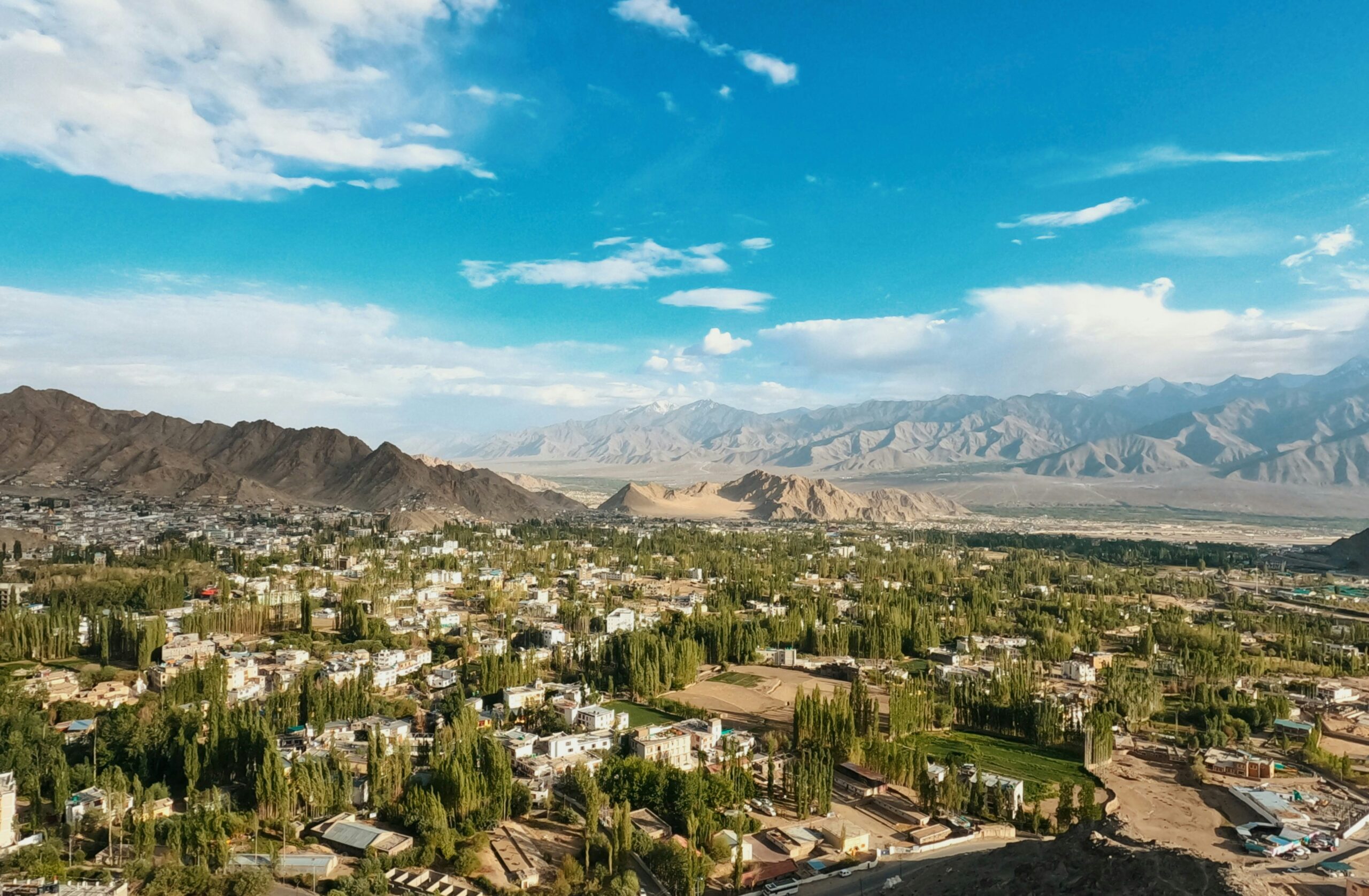
Why Summer Is the Most Popular Time to Visit Ladakh
For many visitors, especially first-timers from Europe, summer is simply the best time to visit Ladakh. From roughly June to August, the famous highways into the region are typically open, and the internal roads to Nubra and Pangong are at their most reliable. The days are long, the temperatures in Leh are comfortable, and most classic treks are feasible without specialist winter equipment. If you are travelling with limited time—or if your idea of the best time to visit Ladakh includes easy logistics, a wider choice of accommodation, and a sense that the whole region is accessible—summer provides all of that. It is the moment in the year when Ladakh feels most like a connected archipelago of valleys and passes rather than a scattered set of isolated pockets. Of course, popularity has its price. The best time to visit Ladakh for solitude is not necessarily July, when trails can become busy and viewpoints crowded. Yet even in summer, Ladakh’s vastness allows for escape. A slightly longer trek, a willingness to stay in simpler homestays rather than the most fashionable camps, or the choice to wake early and walk before the jeeps arrive can restore a sense of quiet. Summer at altitude is not a theme park; it is a short window of possibility. The more you understand that, the more you can use the region’s openness to shape a journey that still feels personal, thoughtful, and rooted in the landscape rather than in the schedule of other people’s tours.
The Emotional Weather of Ladakh’s Summer Months
Summer in Ladakh is not just a matter of sunshine and blue skies. There is a particular emotional atmosphere that hangs over the high valleys when the snow has retreated and the fields are fully green. Villages are busy with work: irrigation channels are running, barley is growing, and children walk to school in the early light. For a European visitor, the best time to visit Ladakh in summer is often the moment when this everyday life becomes visible. You may find yourself sitting on a low wall in the evening, watching the last light spread across a ridge while a family finishes their chores in the fields below. The air is cool but not yet biting; the sky is wide enough to hold whatever questions you brought with you from home. In this emotional weather, the best time to visit Ladakh is less about a specific date and more about the days when you allow your itinerary to loosen. You might skip one viewpoint in favour of lingering in a village courtyard or spend an extra night on a trek because a conversation with your hosts feels unfinished. Summer encourages that kind of small rebellion against efficiency. The plateau seems to say: if you have come all this way, do not rush through. In that sense, the best time to visit Ladakh in summer is whenever you give yourself permission to move one step slower than your schedule demands.
Autumn (September–October): Golden Fields and Slower Footsteps
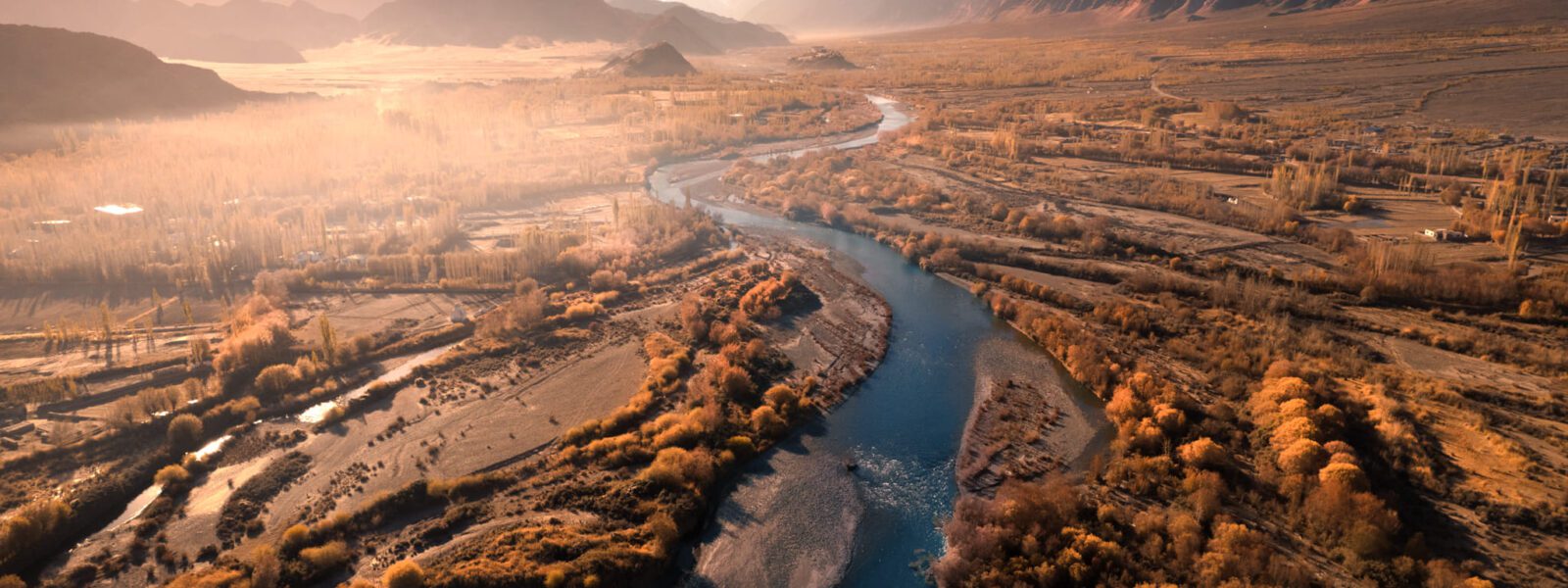
Autumn as the Photographer’s and Thinker’s Season
Ask guides and repeat visitors and many will quietly confess that, for them, the best time to visit Ladakh is not high summer but early autumn. In September and early October, the air turns crisper, the crowds thin, and the fields shift from green to gold. The light becomes sharper, shadows longer, and colours more subtle. For photographers and contemplative travelers, this combination can be irresistible. You still enjoy mostly stable weather and relatively open roads, but the region feels less like a busy junction and more like a series of intimate rooms. In terms of mood, the best time to visit Ladakh for reflection and photography is often this shoulder season, when the urgency of summer has passed and the first reminders of winter are quietly settling in. Practically, the best time to visit Ladakh for demanding treks often overlaps with this autumn window. Trails are drier, river crossings lower, and afternoon clouds less dramatic than in the peak of summer. Nights are colder, but the reward is clarity: star-filled skies, crisp mornings, and landscapes that look somehow more honest in the thinner, cooler light. For a European traveler used to autumn as a season of melancholy and retreat, Ladakh’s autumn can feel like a paradox: the world is preparing for closure, yet your inner life might be opening. The journey becomes less about ticking off places and more about inhabiting the spaces between them.
How It Feels to Walk Through a Quieting Landscape
To walk in Ladakh in late September is to feel a kind of gentle decrescendo. The villages are still active, but there is a new urgency to the work as people prepare for the long winter. Barley stands high in the fields, ready for harvest. The best time to visit Ladakh if you want to witness this cycle is precisely these weeks, when the landscape is both full and on the verge of being emptied. You hear the sound of scythes, the murmur of family conversations in the fields, the clinking of animals being moved to new pastures. The mountains, too, seem to speak more quietly; their outlines are sharper, their presence more defined against the cooling sky. Emotionally, autumn in Ladakh invites slower footsteps. Even if your original plan was efficient—several valleys in a single week, perhaps—you may find yourself unconsciously reducing the daily distance. Instead of asking whether this is the best time to visit Ladakh in terms of weather statistics, you begin to ask: is this the best time for me to listen? You linger more in monasteries, sit longer on rooftops, pay closer attention to the faces of the people you meet. The journey becomes a kind of extended exhale, a way of letting go of some of the speed you carried from home. In that sense, the best time to visit Ladakh may well be autumn, not because of any single factor, but because of the way the whole landscape seems to encourage you to walk, think, and feel differently.
Winter & Early Spring (November–April): Silence, Snow, and the Brave Few
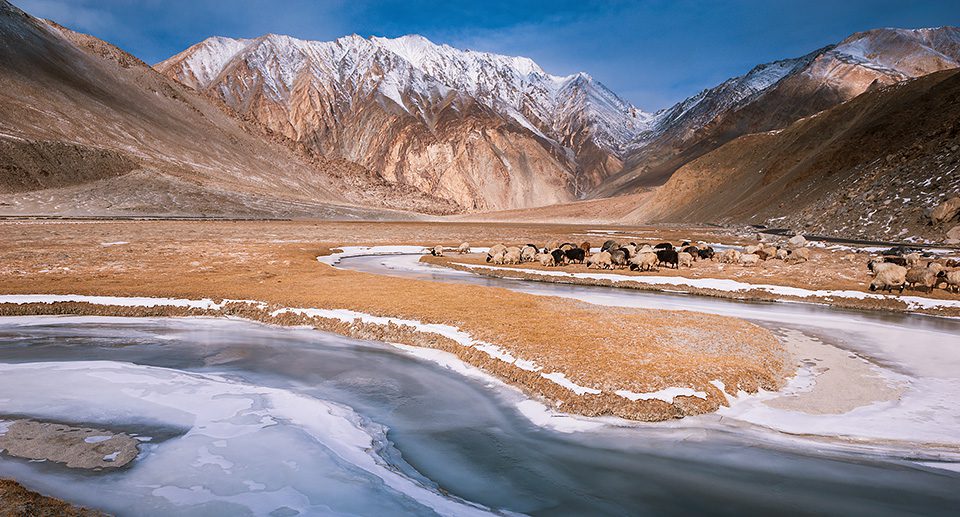
What Winter Demands, and What It Gives Back
Winter in Ladakh is not for everyone, and that is precisely why some travelers consider it their own best time to visit Ladakh. From November through February, temperatures fall sharply, many rural roads close, and tourism infrastructure shrinks to a smaller core concentrated around Leh and a few key valleys. Yet for those who come prepared—physically, mentally, and logistically—this can be the most honest season of all. The hotels that remain open do so deliberately, the guides who work in winter know the landscape intimately, and the wildlife emerges in ways summer visitors never see. The best time to visit Ladakh for snow leopard tracking, for example, is often the heart of this season, when the cats’ movements follow the frozen river corridors and their prey is easier to find. Winter demands layers, patience, and humility. The thin air feels even sharper, and the simplest tasks take more time. But the rewards are profound. Villages feel more like extended families than tourist stops; evenings are spent around stoves, not in café queues. If summer is the best time to visit Ladakh for movement and variety, winter may be the best time to visit Ladakh for silence and depth. You will not cover many places on a map, but you may find that the places you do reach carve themselves more deeply into your memory. Winter is the season that asks, without irony: did you come here to be busy, or did you come here to be changed?
Early Spring: The Subtle Reawakening Before the Crowds
Somewhere between late February and April, depending on the year, Ladakh begins to loosen winter’s grip. Streams start to run where ice once held firm, fields emerge from under their snow, and the colour palette shifts from stark white and brown to a more varied, tentative mix. This is not the dramatic, flower-filled spring of postcard Europe. Instead, it is a slow, almost shy reawakening. For a certain kind of traveler, this is quietly the best time to visit Ladakh. You still feel the imprint of winter in the cold mornings and the limited infrastructure, but you also sense a new energy in the villages and in the people preparing for the coming season. Practically, the best time to visit Ladakh in early spring depends on your tolerance for uncertainty. Some roads will open earlier, others later; some treks may be possible with adjustments, others still off-limits. Yet precisely because of this unpredictability, early spring can be deeply meaningful. You see the region in transition, when nothing is quite settled and everything feels provisional. The landscape teaches you that the best time to visit Ladakh is not always when things are comfortable, but when your expectations are flexible enough to match its own slow thaw. You trade guaranteed itineraries for the privilege of witnessing the high plateau as it wakes up, one stream, one field, one village at a time.
Matching the “Best Time to Visit Ladakh” to the Traveler You Are
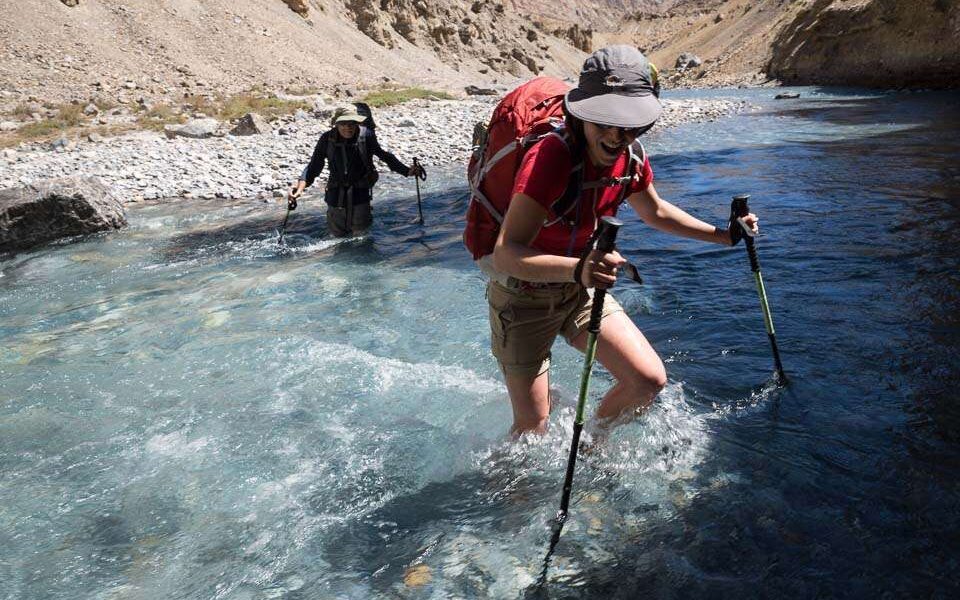
If You Are a Trekker or Peak-Bagger
For trekkers, climbers, and those who define a journey by the number of contour lines they cross, the best time to visit Ladakh is often dictated by stability and daylight. High passes require snow-free approaches, stable weather, and a margin of safety that leaves room for an extra acclimatization day or a weather delay. For most of these travelers, that means aiming for late June through September, with a special emphasis on July, August, and early September. In these months, the days are long, the trails more predictable, and support infrastructure—guides, ponies, camps—at its most robust. The best time to visit Ladakh for demanding treks is not necessarily the quietest season, but it is the one that allows you to commit to serious routes with a reasonable expectation of success. Yet even within this window, nuance matters. Early June can still hold snow on higher passes; late September can bring early storms. The best time to visit Ladakh for your particular trek may be a more precise slice of that broader season. Perhaps you choose late August to balance stable weather and fewer crowds, or early July to align with your own fitness peak after months of training. The key is to treat the phrase “best time to visit Ladakh” not as a single answer but as a spectrum that shifts with your risk tolerance, experience, and willingness to adapt. A well-planned summer or early autumn trek can be life-giving; a rushed one, squeezed into the edges of the season, can feel like a test you did not need to take.
If You Are a Slow Traveler, Family, or Wildlife Seeker
Not every visitor arrives with crampons and summit dreams. Many come as families, couples, or solo travelers whose definition of the best time to visit Ladakh is more relational than athletic. They want safe roads, gentle acclimatization, and the space to sit quietly in a village courtyard while their children chase a dog or their partner reads on the rooftop. For these travelers, the best time to visit Ladakh often falls between late June and early October, with a strong case to be made for September in particular. The days are still manageable, the sun less fierce, and the rhythm of local life easier to observe without the distraction of peak-season crowds. Wildlife seekers, meanwhile, live on a slightly different calendar. For them, the best time to visit Ladakh may be the cold heart of winter, when snow leopards step into view and ibex gather on the exposed slopes. Families with school-age children might find that the best time to visit Ladakh is constrained by holidays, pushing them toward July or August; slow travelers with flexible schedules can step sideways into late May or early October, accepting a little chill in exchange for quieter roads. In each case, the question becomes deeply personal. The best time to visit Ladakh is the season in which both your body and your companions can thrive, and in which the landscape’s mood matches the kind of memory you hope to carry home.
FAQ, Conclusion, and A Quiet Invitation to Come
Frequently Asked Questions About the Best Time to Visit Ladakh
Q: What is the best time to visit Ladakh for first-time travelers?
For most first-time visitors, the best time to visit Ladakh is from late June to September, when road access is widest, temperatures are moderate, and services are fully operational. This window gives you the highest chance of combining safe acclimatization, varied itineraries, and enough comfort to enjoy the altitude without being overwhelmed by logistics.
Q: When is the best time to visit Ladakh for snow leopards and winter landscapes?
The best time to visit Ladakh for snow leopard tracking is usually from January to March, when the cold concentrates wildlife along predictable routes and experienced local teams are active. These months are demanding but rewarding, offering fewer sights in terms of variety yet a much deeper encounter with the stark Himalayan winter.
Q: Is July really the best time to visit Ladakh, or is it too crowded?
July is often considered the best time to visit Ladakh for convenience and access, but it is also one of the busiest months. If you are comfortable with more vehicles on the road and some congestion at popular viewpoints, it can work well. If you prefer quieter trails, consider late August or September instead, accepting cooler nights in exchange for more space and a calmer pace.
Q: What is the best time to visit Ladakh on a tighter budget?
The best time to visit Ladakh on a budget is often the shoulder seasons—late May, early June, or late September—when demand is slightly lower. You may find more flexible rates and still enjoy good access, as long as you are prepared for some weather variability and cooler evenings compared with peak summer.
Q: How far in advance should I plan if I want the best time to visit Ladakh for my needs?
Because flights, good homestays, and experienced guides can book early in desirable months, it is wise to think about your own best time to visit Ladakh at least six months ahead. That lead time allows you to match your preferred season to actual availability, rather than settling for whatever dates are left.
Conclusion — Choosing a Season, and Letting It Change You
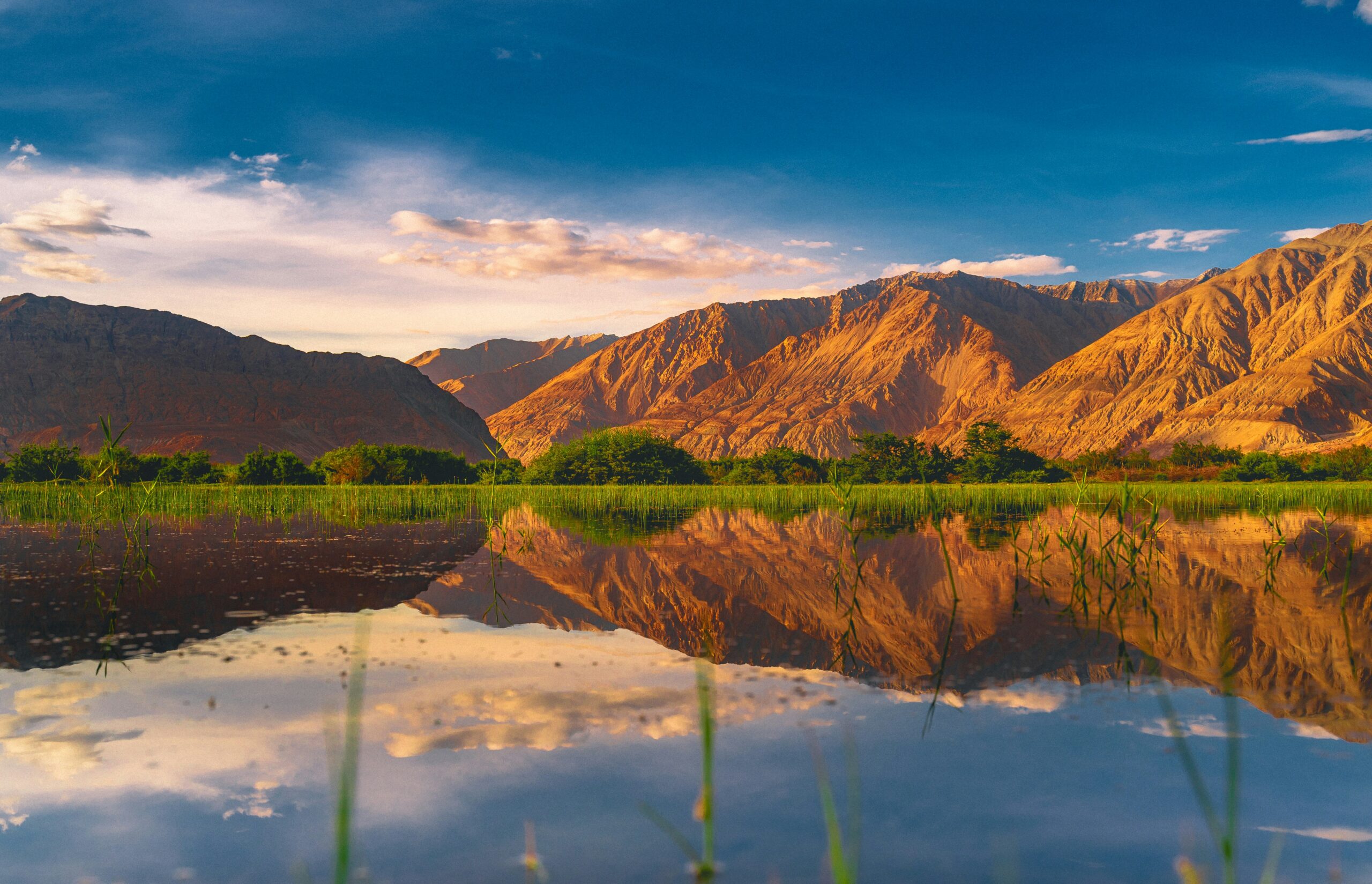
When you strip away the charts and averages, the answer to the question of the best time to visit Ladakh is intensely simple and quietly demanding. If you want open roads, varied routes, and the comfort of numbers, then summer is the best time to visit Ladakh for you. If you crave clarity, empty trails, and a gentler, more reflective light, autumn may be your true season. If you are willing to accept discomfort in exchange for depth, winter might become the best time to visit Ladakh in your personal calendar—the moment when the high plateau reveals itself without decoration. The deeper point is that there is no neutral choice. Each season will shape your behaviour, your pace, and your conversations. The best time to visit Ladakh is, in the end, the time when you are ready to travel without illusions: to respect the altitude, accept the limits, and allow the landscape to dictate something of your schedule. You are not simply choosing between busy and quiet, warm and cold; you are choosing the spiritual temperature of your own journey. That is why the calendar matters, and why it should never be consulted without asking what, precisely, you hope this journey will turn you into.
A Final Note for the Traveler Reading This Far
Somewhere on your desk—or in your browser tabs—there may already be a growing tangle of flight searches, hotel reviews, and comparison charts. You would not be reading this if you were not, on some level, already committed to the idea of going. The remaining question is whether you will treat the best time to visit Ladakh as a problem to solve or as an invitation to listen. The high plateau will still be there in June or October, in a bright August afternoon or a dim February morning. What will change is you: your patience, your expectations, your willingness to move at a pace that has nothing to do with your inbox.
The best time to visit Ladakh is the moment when you are ready to let distance, altitude, and silence rearrange your sense of what matters.
If you can travel with that thought in mind, then your own best time to visit Ladakh may arrive sooner than you think. Whatever month you choose, step onto the plateau with a slower heartbeat, a lighter schedule, and a readiness to be surprised by how much a remote landscape can teach you about your crowded, connected life back home. The mountain keeps its own calendar. The real decision is whether you are willing to let your own finally fall into step with it.
About the Author
Declan P. O’Connor is the narrative voice behind Life on the Planet Ladakh, a storytelling collective exploring the silence, culture, and resilience of Himalayan life. His columns invite readers to move more slowly, notice more carefully, and let distance reshape their understanding of travel.

